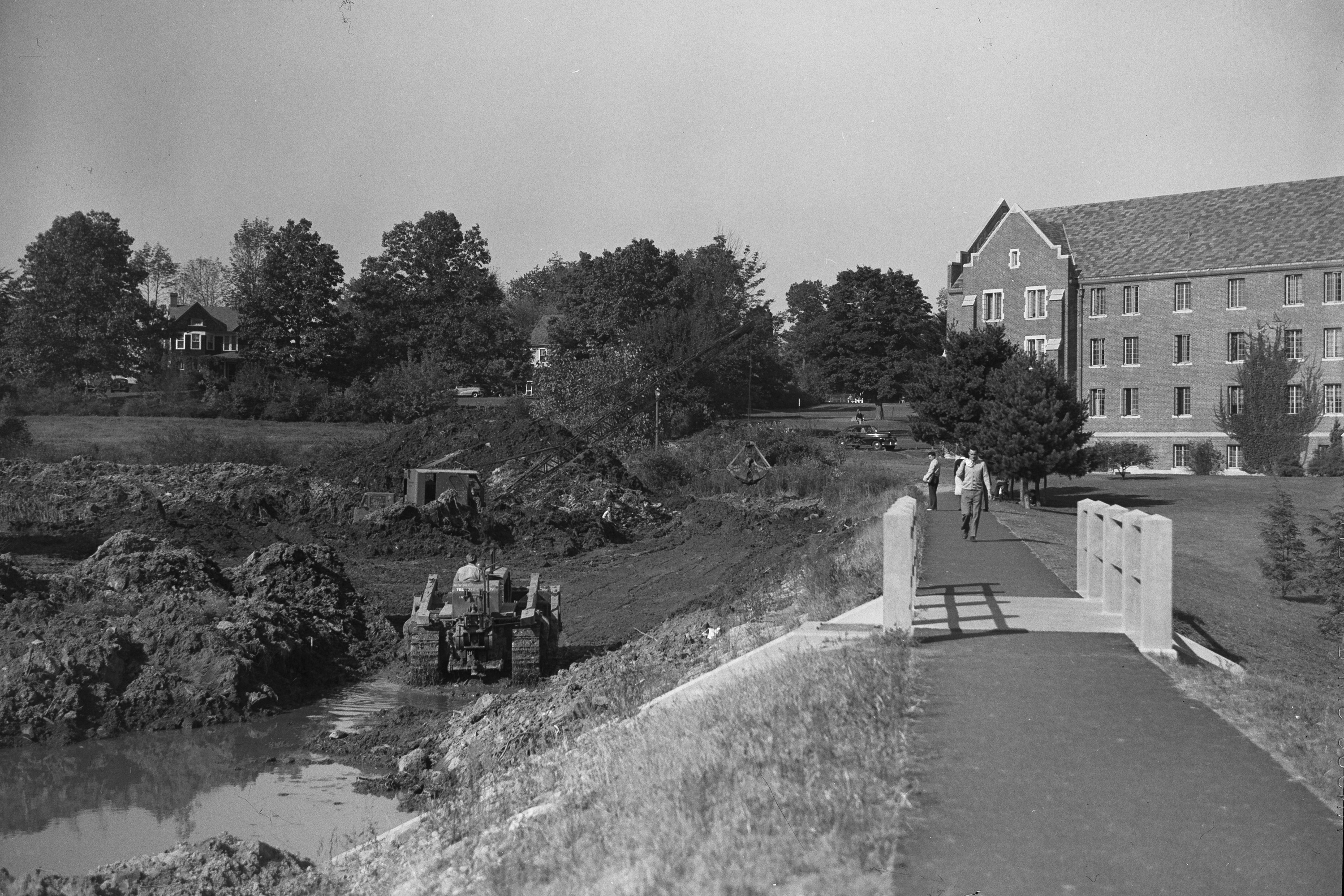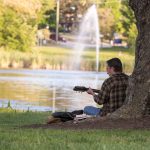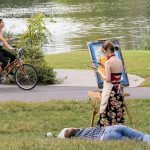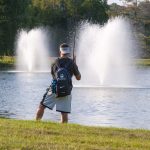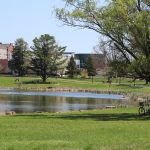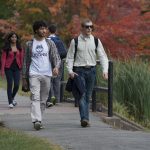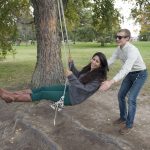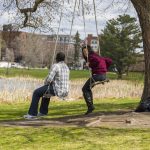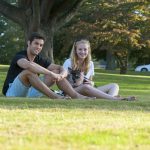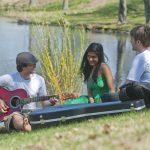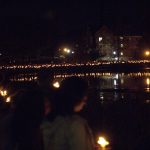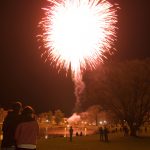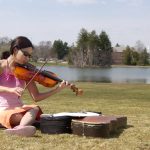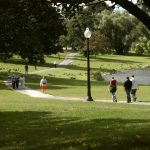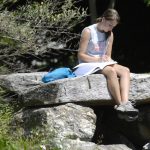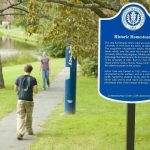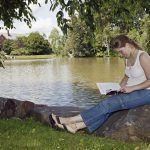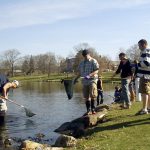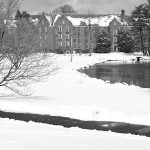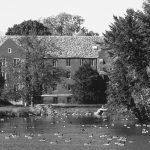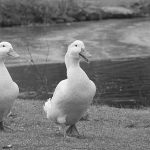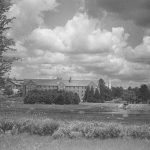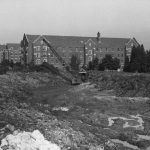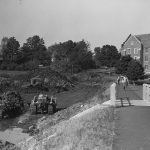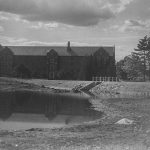Today, Mirror Lake is one of UConn’s favorite places to read, relax, or ride on the wooden swing. But when the University was founded in 1881, the lake didn’t exist.
The site was once a marshy meadow, fed by a small brook, that in summer became a breeding ground for swarms of mosquitoes.
In 1918, Connecticut Agricultural College, as the school was then known, acquired the land from the Whitney family. At that time, the now picturesque island with its lofty evergreens was just a clump of weeds and rushes. A small wooden dam was located at the northeast corner, forming what was barely a pond and more like a swamp.
Swan Lake, on the other hand, was the scene of many activities in the college’s early years – when it was generally known as the Duck Pond. From 1908, the freshman and sophomore classes held an annual rope pulling contest there. The lake was also used for ice skating; and for many years in the pre-refrigerator era, students harvested blocks of ice to service the ice chests of the campus creamery, dining halls, and faculty homes.
Then in 1922, the wooden dam was replaced with a soil dam. (The dam was reinforced in 1935 after heavy spring rains caused a leak; and in 1946, the lake was dredged and the dam again replaced.)
The original work was announced in May 1922 in The Connecticut Campus (forerunner to The Daily Campus), and was scheduled for completion in early July. The dam was to be about 250 feet long, and was intended to flood about four acres, with a maximum depth of six feet. Weeds were cleared; earth was moved to build up a mound, forming the island; and pine seedlings were planted. There was already talk of moving the annual rope pull from Swan Lake.
An important part of the project was to eliminate the pools where mosquitoes bred: it was hoped the new lake would “alleviate the mosquito menace” for faculty families living nearby.
In fall 1922, when students returned, The Connecticut Campus held a contest “to have the honor of originating a name that will go down in the history of the college for the new lake.”
In October, Mirror Lake was selected as the name from among those proposed, which included Meadow Lake, Zephyr Lake, Sunset Lake, Lake Hollister, Pine Grove Pond, Shadow Lake, Bantam Lake, Mansfield Lake, Fairview Lake, Merrythought Lake, Rainbow Lake, and Friendship Lake.
The rope pull, which would last into the 1950s, was moved to its shores. Late in the 1930s, the pines were replaced with spruces planted by Professor Albert E. Moss of the College of Agriculture. Some of the pines had fallen, and others were damaged by muskrats that lived on the lake; those critters were trapped and removed.
There have been other critter problems since then, too: in the 1970s and 1980s the lake suffered from an overpopulation of ducks and Canada geese. Concerned about how these wild animals would fare during the winter, some local residents began feeding the birds daily. With meals readily available, the birds stopped migrating to warmer regions. And seagulls started to congregate as well. Soon the lake was dying from an overabundance of excrement. Feeding the birds was banned by state statute in the 1980s, and game wardens moved the waterfowl to other locales.
At times, there have been brightly colored fish – orange or combinations of orange, yellow, black, and white – living in the lake, the descendants of abandoned pet goldfish. And for a time after the mid-1960s, there were also white ducks paddling through the water – more abandoned pets, gifts between students at Easter that could no longer be hidden in dorm rooms.
Occasionally, still, a heron can be seen perched on a rock near the island.
Although students used to use the lake for boating, sailing, and ice skating, the opening of the UConn Ice Rink in 1965 (which preceded the Freitas Ice Forum) brought an end to its use for skating, and human activity in or on the water is no longer allowed. Ice skating does, however, continue in winter on Swan Lake.
Sources: Connecticut Campus, May 11 and Oct. 19, 1922; Connecticut Daily Campus, May 10, 1967, “Paradise for Ducks, Turtles, Lovers,” Cornelia Anderson; unpublished manuscript, Evan Hill, 1980.
Adapted from an article by Mark Roy in the UConn Advance, Sept. 29, 1997.
